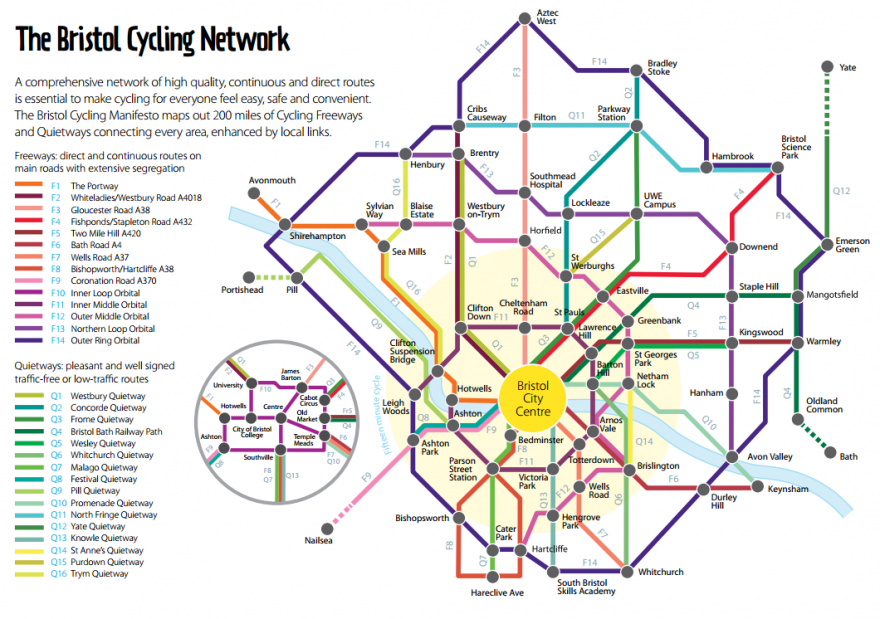Off Road Riding
Cycling as transport!

A few years ago I had the dubious pleasure of attending a session entitles ‘My Cycling Vision’, given by a long forgotten Bristol councillor, hosted by one of Bristol’s cycling pressure groups.
Since then I have watched with interest to see how that stumbling vision was put into practice. Not well. Painted cycle lanes and unenforceable advanced stop lines, cycle lanes that run against the traffic, wholesale road narrowing, and the well recounted cycle lanes that end where the road becomes dangerous.
It’s not all bad though, there are some great routes out of the city, although they seem to be constantly under threat as bus routes, to replace the 100’s of cyclists that commute on them every day, with no proposed replacements.
In all the £23,000,000 that was supposed to be spent seems to have gone.
The danger of high profile spending with (apparently) large numbers attached is that it raises expectation. It raises the expectation of cyclists that they are considered to be tax-paying members of society who do not expect to have their lives risked at the angry whim of a commuter confused by Bristol’s traffic system or 20 seconds late on the school run.
As a cyclist you are at the forefront of the most important transport revolutions of the modern era. To genuinely reduce the environmental impact of the modern requirement for transport cycling is the most valid option. Mass transportation, whilst effective and popular, is at odds with the post-modern individualism and the freedom of personal transportation.
Expenditure on a real cycling network to enable short and medium length journeys – the most common length journeys - is critical.
A cycling network should reflect the current paradigm of the road network. It should be usable in all weather conditions, it should be clean, safe, well maintained, well lit, be wide enough for cyclists to pass traveling in the same direction as well as in opposite directions.
It should not be a wide pavement with dangerous junctions where roads cross, and badly designed, poorly signposted areas where it rejoins roads, it should not be dirty, narrow, or populated by dog walkers or mothers with prams.
A cycle network should not be an afterthought of the road network any more than the road network is an afterthought of the rail network, or the railways of the canals.
The political will to create this cannot pander to the car industry, but should recognise the value of the bike industry, an industry with genuine technical innovation, relatively low barriers to entry, and low cost products, yet still worth billions of pounds a year.
The other government favoured employer, the building industry, can only benefit from a cycling development programme, not only having less environmental impact as an industry, but also improving the standard of living of society as a whole. Even if developers were only granted planning permission on the basis of including an effective cycling network as part of a modern development, in the same way that supermarkets are often required to have some civic responsibility, it would be a good start.
A cycle network is not just a city-wide project, it’s a country-wide project.
As a cyclist you are also at the forefront of the battle against public ignorance.
We will be satisfied when children ride to school because it’s the quickest, cheapest, safest and most fun form of travel. We will be satisfied when we get our money’s worth from the road budget.
Can we develop a real cycling vision that really works for cyclists? Let’s try it and get behind the Bristol Cycling Manifesto.
